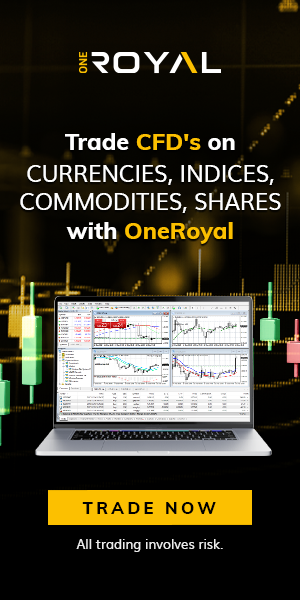In forex trading, the term bear power plays a crucial role in understanding market movements.
It’s a concept that can give traders valuable insights into how strong the selling pressure is, and how much control the bears (sellers) have over the price of a currency pair.
Whether you’re a beginner or an experienced trader, understanding bear power is important in making better decisions, especially in markets that are showing signs of a downward trend.
In this article, we’ll look into the meaning of bear power, how to measure it, the factors influencing it, and how you can use it to your advantage in your forex trading strategy.
Keep reading to learn how bear power can help you gain an edge in trading.
In This Post
What is Bear Power?
In forex trading, bear power refers to the strength and influence that the “bears” (sellers) have in a market.
When traders talk about a market being “bearish,” it means that the price of a currency or asset is generally moving downward, and bear power is the measure of how strongly those sellers are pushing the market lower.
Understanding bearish power helps traders decide when to enter or exit trades based on the strength of the selling pressure in the market.
But just like a bear’s swipe can leave a mark, the bearish power in trading is essentially the degree of control that the sellers (or bears) have over the price action.
If it is high, it means there’s strong selling pressure, and the price is more likely to fall further.
On the other hand, weak bearish power suggests that selling pressure might be losing its grip, and the market could reverse or stabilize.
The Bear Power in the Market
To understand it, it’s important to first learn how the market works in terms of “bulls” and “bears”:
- Bulls (Buyers): These are traders or investors who believe that the price of a currency will rise. They’re the ones who push the market upwards.
- Bears (Sellers): These traders believe that the price of an asset will decrease. They control the market when the price is falling.
In any given market, there’s a constant battle between buyers (bulls) and sellers (bears).
When the bears are in control, the market is said to be in a bearish trend, which means prices are falling.
It measures the strength of this downward movement, or in other words, how much control the bears have in forcing the prices down.
Example
Let’s say you’re analyzing the EUR/USD currency pair. If there’s a strong bear power, the sellers are aggressively pushing the price down.
This could be because of news, economic factors, or technical trends that support a decrease in the price.
When it is high, you can expect a sustained downward trend.
The Role of Bear Power in Forex Trading
It doesn’t just refer to how far the market is falling; it also measures the intensity or momentum behind the selling action.
For example, consider two situations:
High Bear Power
If there is a lot of selling activity and the price is falling rapidly, that’s a sign of strong bearish power.
The market is clearly under the control of the bears, and there’s a high likelihood the price will continue to fall for a while.
Low Bear Power
If there’s selling, but the price is falling slowly, or if there’s a sudden price drop followed by a quick reversal, the bear power is weak.
The market could be entering a phase where buyers (bulls) are starting to gain strength and may push the price back up.
Example
Let’s say you’re trading the GBP/USD. If the price of GBP/USD has been dropping for several hours and the momentum is still strong (meaning the bears are still in control), that would indicate high bear power.
In such a case, traders may consider selling or entering a short position on the currency pair, as the downward trend seems likely to continue.
How to Measure Bear Power
Now, you may be wondering, how do we know how strong the bear power is?
While bearish power itself is a concept tied to market psychology and price movement, it can be assessed by using technical analysis tools.
The most common way to measure bear power involves looking at certain indicators or analyzing price action:
1. Price Action
The simplest way to gauge bear power is by looking at how the price moves. If the price is consistently lower with strong momentum (meaning it falls quickly and consistently), you can infer that bear power is strong.
2. Volume
Another way to measure bear power is by looking at volume. If there is an increase in volume as the price is falling, it shows that more traders are participating in the selling activity, which strengthens the bear power.
3. Candlestick Patterns
Certain candlestick patterns can indicate bear power. For example, a bearish engulfing pattern suggests that sellers have gained control and are pushing the market lower.
4. Technical Indicators
Tools like Moving Averages, RSI (Relative Strength Index), or MACD (Moving Average Convergence Divergence) can also help assess bear power.
These indicators show the strength of the current trend and can help you determine if the market is still under the influence of the bears.
Factors That Influence Bear Power
Several factors affect the strength of bear power in the market. Understanding these factors will help you anticipate when bear power might increase or decrease.
1. Economic News and Data
News about the economy (such as interest rate decisions, employment data, inflation rates) can significantly impact bear power.
If bad news hits a currency (like a poor jobs report or lower-than-expected GDP), sellers might rush in, increasing bear power.
2. Market Sentiment
If investors and traders are feeling pessimistic about a particular currency or asset, bear power can rise. Fear, uncertainty, and global events can all lead to an increase in bear power.
3. Technical Indicators
As mentioned earlier, technical analysis tools can help gauge bear power. For example, if the price crosses below a key support level, it signals that the bears are in control and the price is likely to fall further.
4. Global Events
Natural disasters, political instability, or geopolitical tensions can all trigger a surge in bear power. These events can cause sudden sell-offs, as traders try to minimize their risk exposure.
Pros and Cons of Bear Power
Learning the pros and cons of bear power is important for any trader looking to operate the market successfully.
Pros of Bear Power
- Understanding bearish power gives traders insights into the market’s direction. If bear power is strong, you know the market is likely to continue its downward trend, giving you a clear idea of whether to enter short positions.
- Strong bear power opens up opportunities to make profits in a falling market. With the right strategy, you can capitalize on downward movements, even when prices are declining.
- It gives a clear picture of market sentiment. If bear power is increasing, it suggests growing negative sentiment, which could help you anticipate future price movements.
Cons of Bear Power
- Sometimes, bearing power can be misleading. A quick drop in price might seem like strong bear power, but it could be just a temporary fluctuation or an overreaction to news.
- Bear doesn’t always predict a reversal accurately. After a prolonged downtrend, there may be a sudden price bounce as buyers enter the market. This can catch traders off guard, leading to losses if you’re not careful.
- It can help identify the strength of the trend, but it doesn’t always tell you when it will end. The market can continue to be under bear control for a longer time than expected.
How to Take Advantage of Bear Power in Forex Trading
1. Enter Short Positions
When bearish power is strong, consider entering short positions (selling) in the market. This allows you to profit as the price falls.
Always use stop-loss orders to minimize potential losses if the market reverses unexpectedly.
2. Wait for Confirmation
Don’t trade on bearish power alone. Use it in combination with other indicators and price action signals to confirm that the market is truly in a bearish phase.
3. Follow the Trend
Remember the adage, “The trend is your friend.” When bear power is strong, it’s often best to follow the trend rather than fight against it.
This way, you’ll be able to ride the wave of the market’s downward movement.
Frequently Asked Questions
How do I know if bear power is strong?
- Strong bear power is typically indicated by fast and consistent downward movement in the price, accompanied by higher selling volume.
Technical indicators like moving averages and RSI can also help confirm the strength of bear power.
Can bear power change quickly?
- Yes, bearish power can change quickly. For example, a sudden piece of economic news or a market event can cause bearish power to surge, leading to rapid price declines.
Should I always trade with bear power?
- Not always. While strong bearish power can indicate a good short-selling opportunity, it’s important to look for confirmation from other indicators to avoid false signals and market reversals.
Is bear power the same as a bearish market?
- Not exactly. bearish power is a measure of the strength of selling pressure in the market, whereas a bearish market refers to a broader trend where prices are falling. bearish power helps quantify how much strength the sellers have in pushing the price lower.
Conclusion
Understanding bearish power in forex trading is essential for identifying strong downward trends and capitalizing on falling markets.
By recognizing when it is strong, you can make informed decisions about when to sell and how to manage your trades effectively.
Always remember, while it is a good tool, it’s most effective when combined with other analysis techniques and risk management strategies.
Now that you know what bearish power is, you can start incorporating it into your trading strategy to improve your chances of success.
Keep practicing, stay informed about market trends, and always manage your risks carefully.




